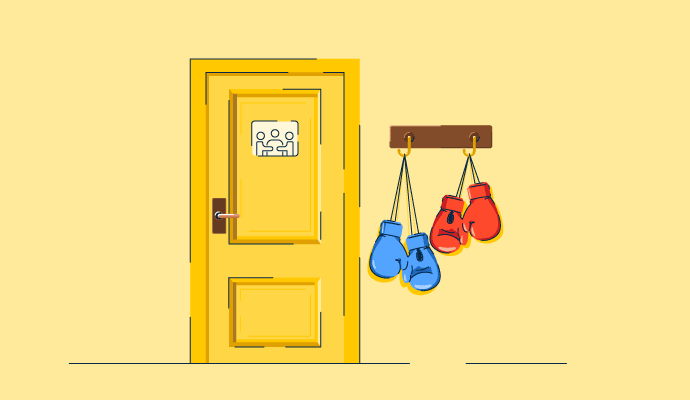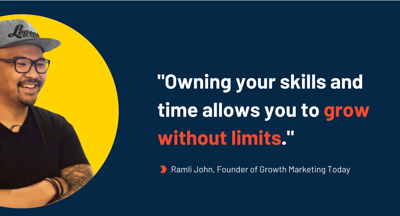June 23, 2025
 by Mary Clare Novak / June 23, 2025
by Mary Clare Novak / June 23, 2025

Imagine finalizing a pivotal business deal and the paperwork slips through the cracks. You’re heading toward a pitfall: a messy legal conflict. That's where mediation swoops in. It’s a structured, private way to fix disputes. It's usually faster, friendlier, and less costly than courtroom drama.
Many companies facing legal friction turn to legal case management tools to stay organized during the mediation process. These platforms help track documentation, communication, and compliance, keeping everything on record without escalating to a full-blown trial.
Mediation is a structured negotiation process where a neutral third party helps disputing parties reach a voluntary agreement. It is commonly used in legal, workplace, and family disputes as a cost-effective and confidential alternative to litigation.
While the mediator helps the parties reach a dispute resolution, this does not mean they must abide by it. The only people who can resolve the situation are the parties in the dispute.
The mediator is there to offer guidance and lead the conversation. Examples of mediators include conflict resolution for workplace issues, contract disputes, employee conflicts, and divorce proceedings.
| Feature | Mediation | Arbitration | Litigation |
| Type | Facilitated conversation | Formal decision by a neutral third party | Judge/jury decides in court |
| Who decides? | The people in conflict | Arbitrator | Judge or jury |
| Binding? | Only if formalized in writing | Usually binding | Always binding |
| Cost | Low | Medium to high | High |
| Timeframe | Fast (days–weeks) | Moderate (weeks–months) | Long (months–years) |
| Privacy | Confidential | Mostly private | Public record |
| Appeals | Not applicable | Limited or none | Full appeals possible |
Why it matters: Businesses often weigh these options depending on cost, control, and confidentiality. Mediation offers more flexibility, while arbitration delivers a faster judgment, and litigation provides legal finality, but at a steep price.
Mediation is a great way to resolve various problems and avoid initiating a lawsuit. It is common for courts to require the disputing parties to partake in mediated conversation or arbitration before beginning a trial.
While a good discussion never hurts anyone, there are some more common disputes that mediation is used to resolve.
When a conflict arises between two parties, mediation can be used to understand both perspectives, resolve, and avoid running into another conflict in the future.
Mediation doesn’t only have a place in conflicts; mediators can help families, organizations, and businesses find the best and most strategic way to move forward during a problem. For this type of mediation, the involved parties collaborate, share information, and work together to find the most suitable course of action.
The mediation process has two key roles: the mediator and the parties having the dispute.
In a dispute, there are typically two parties. The primary responsibility of both parties is to provide as much information as possible about the dispute at hand. This way, the mediator can help find the most effective resolution.
Sometimes, the parties can meet with the mediator individually before the three parties come together to discuss things one-on-one. The purpose of this is for the parties to get some practice in negotiating to have a little more influence on resolving the conflict. This situation is called party-directed mediation, requiring less interference from the mediator.
The mediator is a third-party individual or agency unrelated to the disputing parties. Their main goal is to direct the conversation in a way that will result in finding a resolution that the disputing parties will find mutually satisfactory and beneficial. The mediator does not act on behalf of any party in particular and must remain neutral.
No mediation process is perfect, and things can get off-topic or out of hand. A part of remaining neutral is ensuring neither party shows aggression or intimidation. Mediators need to remind the disputing parties that the topic at hand is most important and resorting to personal attacks will not make any progress.
While mediation is less formal than going to trial, there is still a process in place. Mediators and the disputing parties undergo seven steps to settle.
The mediator will help set up a time and place for the mediation, and the parties will discuss who will be present during the conversation.
Once the parties and the mediator have gathered and everyone is seated, the mediator will make their opening statement. This typically includes an introduction, the rules of the mediation, the goal they wish to reach, and a little bit of encouragement to the disputing parties to do their best to cooperate and find a way to settle.
After the mediator makes their opening statement, each party will have a chance to do the same. They will both go over the conflict, the consequences that arose from it, and how they are feeling about the situation. Neither party is allowed to interrupt when the other is speaking.
This stage might include the mediator requesting that each party respond to the other’s opening statement and ask any questions they might have to help them better understand the situation. This way, new information about the dispute can be introduced and discussed.
Things are likely to get out of hand and personal during the discussion. The mediator's job is to steer the discussion in the right direction.
In legal terms, a caucus refers to a closed meeting of a group of people, usually to decide on a course of action. As expected, this is typically the longest part of the mediation.
After the discussion, the mediator will privately meet with each party individually. During this stage, the mediator will talk with the parties about their position and whether or not it is a strong one. They will also exchange offers from one party to the other. The mediator can go back and forth between each party as often as necessary within the allotted time.
In most cases, the mediator doesn't bring the parties back together until a settlement has been agreed upon or the allotted time for the mediation has ended. Sometimes, however, the mediator will bring the parties together for negotiation after the private caucuses.
If the parties agree on a settlement, the mediator will typically write it, and each side will sign the agreement summary. This way, each party is obliged to abide by the settlement.
If an agreement is not reached, decisions on how to proceed will be made.
Resource: Not all conflicts can be settled through mediation. In some cases, interventions by lawyers are the best option. If you find yourself in a legal conflict, it might help to explore some legal service providers.
Costs are generally split between the parties, unless a contract or court order specifies otherwise. The split is usually 50/50, but can be negotiated differently (e.g., 60/40) depending on power dynamics or financial ability.
If a mediator is court-appointed, the court might set fees or have sliding scales. You’ll want to clarify cost division upfront to avoid surprises.
Sometimes, corporate contracts include clauses requiring one party to cover mediation costs. In public-interest cases (e.g., community or school matters), nonprofits or governments may fund the process.
You can go from problem to solution in just a few hours or sessions, or it might take a few weeks, depending on the complexity.
| Case type | Time estimate |
| Simple dispute | 1 session (2–3 hours) |
| Moderate complexity | 3–5 sessions over 2–4 weeks |
| High complexity | Several weeks to a few months |
A lot depends on the people involved:
Other time factors:
In contrast to litigation, which can stretch years, mediation provides a streamlined resolution path that can be resolved in days or weeks.
There’s a reason why so many people turn to mediation before filing a lawsuit.
Mediation isn’t ideal for every dispute, but for many, it offers a low-risk, high-benefit alternative to adversarial legal action.
By itself, mediation is non-binding. That means you’re not stuck with the outcome unless you both choose to formalize it.
If both sides agree and want to lock it in, a signed settlement can be:
Have more questions? Find the answers below.
During mediation, both parties present their views to a neutral mediator who guides the discussion, identifies key issues, and facilitates compromise. The goal is to reach a mutually acceptable agreement without going to court.
The main difference between mediation and court is that mediation is informal, confidential, and voluntary, while court proceedings are formal, public, and binding. A mediator facilitates resolution, whereas a judge imposes a decision.
Mediation is not legally binding unless both parties sign a written agreement. Once signed, the agreement becomes enforceable like a contract or court order, depending on jurisdiction.
Mediation costs are usually shared equally by both parties unless otherwise agreed. Some courts or programs may offer free or low-cost mediation for qualifying individuals.
The pros of mediation include lower cost, faster resolution, privacy, and control over the outcome. The cons include a lack of enforceability without agreement and potential imbalance if one party dominates the discussion.
Nobody likes running into conflict, and resolving it can be even worse. While there are no guarantees about the outcome, mediation can be the right choice for someone looking to settle a dispute quickly, fairly, and cordially.
Looking for some tips for handling a dispute in the office? Check out the top conflict management strategies in the workplace.
This article was originally published in 2023. It has been updated with new information.
Mary Clare Novak is a former Content Marketing Specialist at G2 based in Burlington, Vermont, where she is explored topics related to sales and customer relationship management. In her free time, you can find her doing a crossword puzzle, listening to cover bands, or eating fish tacos. (she/her/hers)
Monina Wagner, Community Manager at Content Marketing Institute, shares her unlikely foray...
 by Lauren Pope
by Lauren Pope
Founder and host of the Growth Marketing Today podcast, Ramli John shares how he made an...
 by Lauren Pope
by Lauren Pope
The feeling is as familiar as it is ugly. You’re sitting in a room of your peers and suddenly...
 by Lauren Pope
by Lauren Pope
Monina Wagner, Community Manager at Content Marketing Institute, shares her unlikely foray...
 by Lauren Pope
by Lauren Pope
Founder and host of the Growth Marketing Today podcast, Ramli John shares how he made an...
 by Lauren Pope
by Lauren Pope


